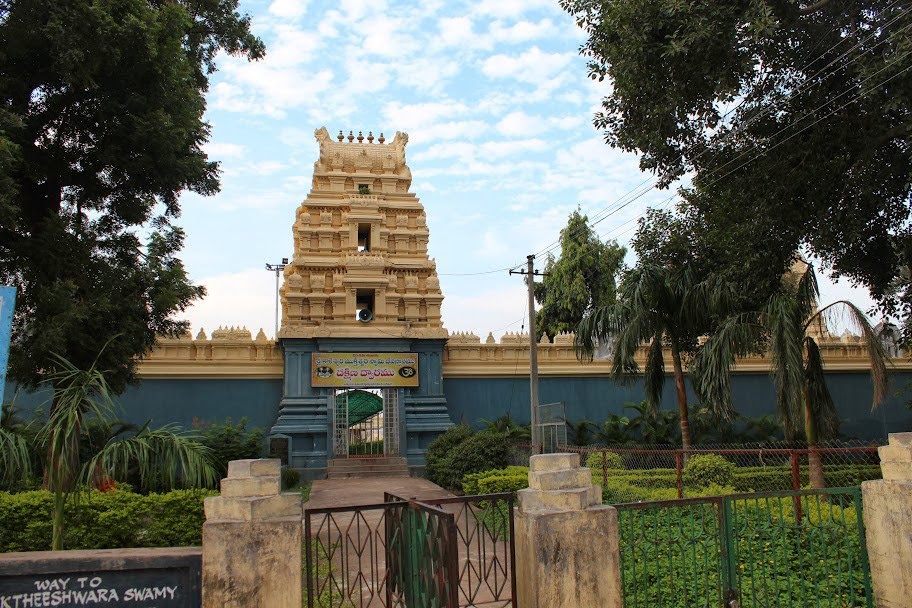Kaleshwaram Kaleshwara Mukteswara Swamy Temple, Telangana

Address
Kaleshwaram Kaleshwara Mukteswara Swamy Temple, Kaleshwaram, Bhoopalpally District, Telangana – 505 504 Phone: +91 9032198108
Deity
Kaleshwara, Mukteswara Swamy Amman: Parvati
Introduction
Kaleshwara Mukteswara Swamy Temple is a significant and unique temple dedicated to Lord Shiva, located in Kaleshwaram, Telangana. Situated on the banks of the sacred Godavari River and its tributary Pranahita, this temple is often referred to as “Dakshina Gangotri.” The temple’s location along one of India’s major rivers adds to its religious significance.
Trilinga Kshetram
Kaleshwara Temple is considered one of the Trilinga Kshetrams, alongside Bhimeswaram (Draksharamam) and Srisailam. These three temples are revered in Hindu tradition for their deep connection to Lord Shiva.
Puranic Significance
- The Kaleshwara Mukteswara Swamy Temple is believed to be around 1500 years old, making it a culturally and historically significant site.
- A unique feature of this temple is the presence of two Shiva Lingas on a single pedestal, representing Lord Shiva and Lord Yama. This duality inspired the temple’s name, Kaleshwara.
- According to legend, the installation of the second Shiva Linga was a test of devotion for the temple’s devotees, initiated by Lord Yama after he expressed concern over the ease with which souls were attaining salvation.
- Devotees who perform a holy dip in the Triveni Sangam (the confluence of three rivers) and sincerely worship Lord Muktheswarar are believed to attain moksha or salvation, while those who overlook Kaleshwara risk being destined for Yamaloka.
Special Features
- Trilinga Desam: Refers to the “Land of Three Lingams,” encompassing the significant temples of Kaleshwaram, Draksharamam, and Srisailam.
- Abhisheka with Milk: The temple’s lore includes a story of a Vaishya performing an abhisheka with hundreds of milk pots, which merged at the confluence of the Godavari and Pranahita, creating a sacred site known as Dakshina Gangotri or Dakshina Triveni Sangamam.
- Dakshina Gangotri: This term parallels Allahabad (Prayaga), known for its sacred confluence of three rivers, highlighting Kaleshwaram’s importance as a pilgrimage site.
- Confluence of Rivers: The merging of the Godavari and Pranahita rivers, along with the illusionary flow of Antharvahini, enhances the temple’s spiritual significance, believed to have purifying and rejuvenating properties.
Festivals
The temple hosts a variety of festivals, including:
- Maha Shivarathri (3 days)
- Navagraha Rudra Chandi Havanam on monthly Shivarathri
- Navaratri
- Dhanur Masa special Pooja
- Rama Navami
- Panchanga Shravanam
- Ugadi
- Vinayaga Chathurthi
- Karthikai
Every 12 years, Pushkarams are organized at Kaleshwaram, drawing numerous pilgrims. During the Karthika Month (November 16 – December 15), holy baths are held from December 6–17. Visitors traditionally worship Lord Ganesha before proceeding to pray to Lord Yama and Lord Shiva. The temple offers two types of prasadam: Puliathora (Tamarind rice) and Laddu (sweet).
Century/Period/Age
1500 Years old
Nearest Bus Station
Kaleshwaram
Nearest Railway Station
Ramagundam Station
Nearest Airport
Hyderabad





September 11, 2024 at 1:43 pm
change the contact number
http://www.kaleshwaramtemple.com